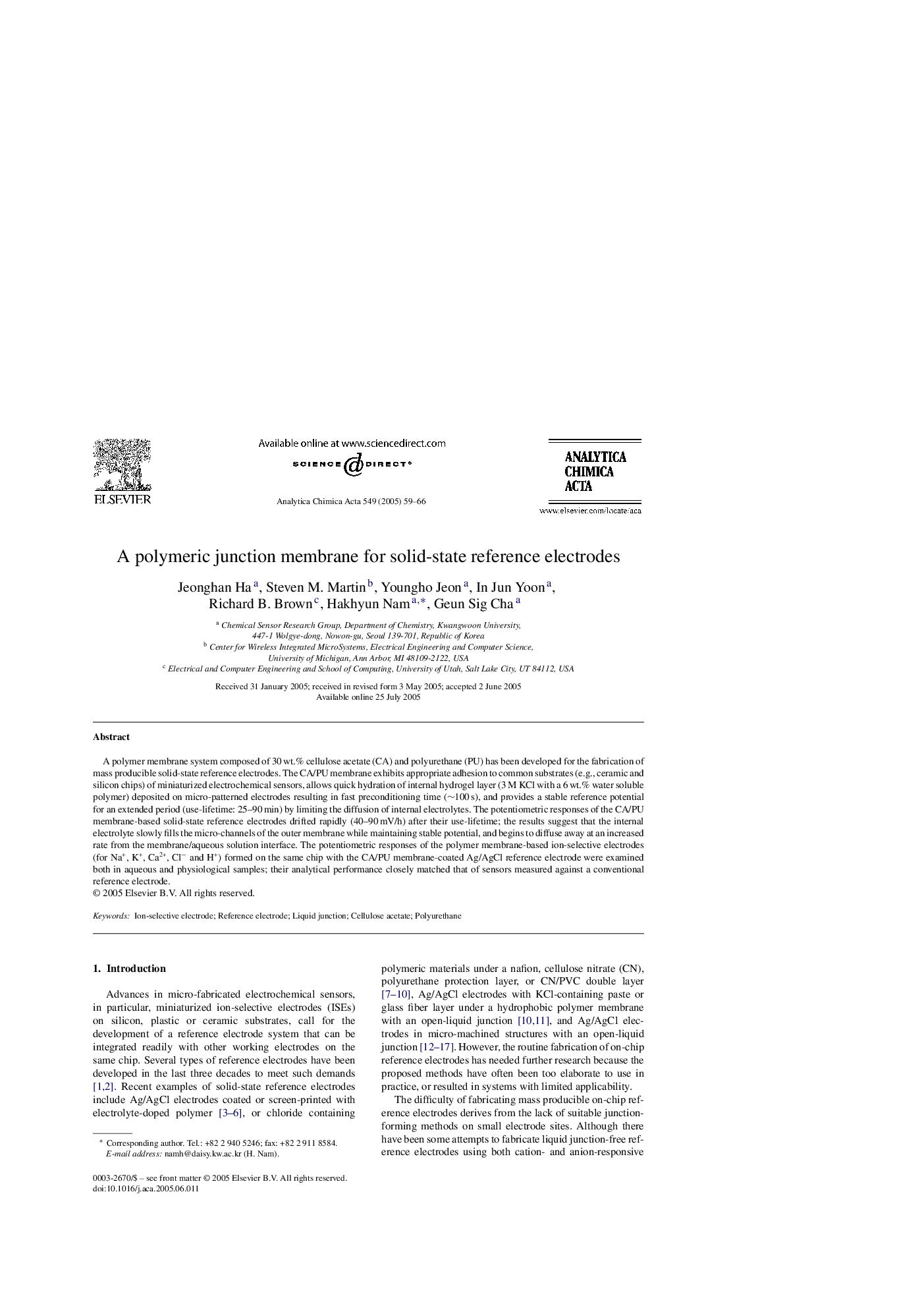| Article ID | Journal | Published Year | Pages | File Type |
|---|---|---|---|---|
| 9743460 | Analytica Chimica Acta | 2005 | 8 Pages |
Abstract
A polymer membrane system composed of 30Â wt.% cellulose acetate (CA) and polyurethane (PU) has been developed for the fabrication of mass producible solid-state reference electrodes. The CA/PU membrane exhibits appropriate adhesion to common substrates (e.g., ceramic and silicon chips) of miniaturized electrochemical sensors, allows quick hydration of internal hydrogel layer (3Â M KCl with a 6Â wt.% water soluble polymer) deposited on micro-patterned electrodes resulting in fast preconditioning time (â¼100Â s), and provides a stable reference potential for an extended period (use-lifetime: 25-90Â min) by limiting the diffusion of internal electrolytes. The potentiometric responses of the CA/PU membrane-based solid-state reference electrodes drifted rapidly (40-90Â mV/h) after their use-lifetime; the results suggest that the internal electrolyte slowly fills the micro-channels of the outer membrane while maintaining stable potential, and begins to diffuse away at an increased rate from the membrane/aqueous solution interface. The potentiometric responses of the polymer membrane-based ion-selective electrodes (for Na+, K+, Ca2+, Clâ and H+) formed on the same chip with the CA/PU membrane-coated Ag/AgCl reference electrode were examined both in aqueous and physiological samples; their analytical performance closely matched that of sensors measured against a conventional reference electrode.
Related Topics
Physical Sciences and Engineering
Chemistry
Analytical Chemistry
Authors
Jeonghan Ha, Steven M. Martin, Youngho Jeon, In Jun Yoon, Richard B. Brown, Hakhyun Nam, Geun Sig Cha,
